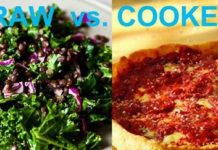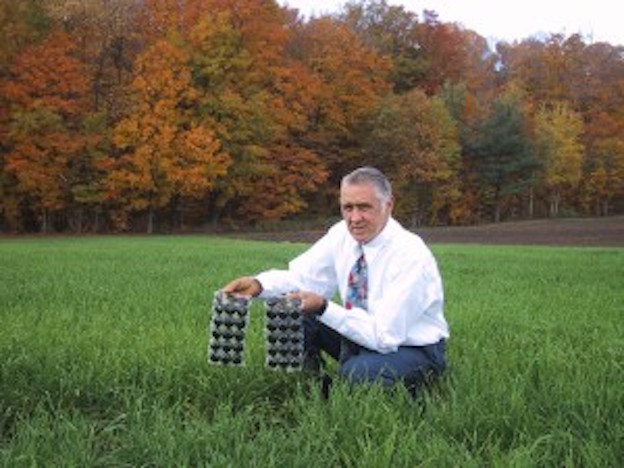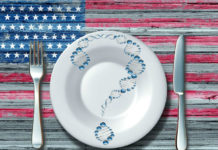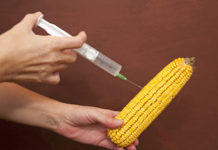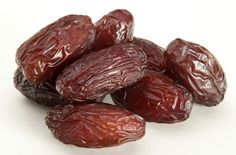The Evil Molecule Lurking in Your Dairy Products
 Basically, Jim Cross, the original author of this article, doesn’t actually have a problem with dairy products, just the “A1” variant we have today in most countries. However, there is actually NO incentive at all for modern farmers to learn about this problem, let alone do something about it. So we are all basically stuck with a type of milk that is the worst type of all, and is responsible for many of today’s “diseases of civilization!” A good reason to think about becoming vegan and dairy-free!
Basically, Jim Cross, the original author of this article, doesn’t actually have a problem with dairy products, just the “A1” variant we have today in most countries. However, there is actually NO incentive at all for modern farmers to learn about this problem, let alone do something about it. So we are all basically stuck with a type of milk that is the worst type of all, and is responsible for many of today’s “diseases of civilization!” A good reason to think about becoming vegan and dairy-free!
A2 beta-casein is the type of beta-casein that cows have produced since before they were first domesticated thousands of years ago. It is considered safe and nutritious and has no known negative effects on human health. In the last few thousand years, a mutation occurred in European dairy herds that changed the beta-casein they produced. This new type of beta-casein — as A1 beta-casein — is common in the big black-and-white cow breeds of European descent. Sadly, it is the A1 producing cows that are used to produce the majority of milk in Europe and America today!
When digested, A1 beta-casein (not the A2 variety) releases beta-casomorphin7 (BCM7), an opioid with a structure similar to that of morphine. BCM7 may be the biggest troublemaker. Numerous tests have shown that blood from people with autism and schizophrenia contains higher levels of BCM7.
Richard Deth, a professor of pharmacology at Northeastern University in Boston, did a study which showed that the presence of high amounts of BCM7 causes a shortage of antioxidants in neural cells, a condition tied to autism.
If you are not even a vegan but still want to be as free as possible from diet-related diseases, try to find healthier A2 type milk. However, it is almost impossible to find in America, so I suggest you STOP using all dairy products entirely!
“Every body needs milk” – or does it? Or are some types of milk more favorable than others for specific people? I tend to favor the latter statement after research that I have uncovered. I am not going to reconstruct the original research of the beta-casomorphin-7 (BCM-7) molecule. This is the result of tireless work by many scientists. I am just going to try to bring their hard work together and illuminate the big clinical picture.
The key information stems from published scientific papers that will be listed. Some dairy people are not interested in having this information disseminated. They think that it will damage their industry. I think that this information can help more people become tolerant of ingesting dairy products, which in the long run will only benefit their industry. Anyway, integrity in research requires that we need to follow whatever path the evidence leads to. I call this the scientific attitude. Unfortunately, this isn’t always the case in real life. Nancy Wertheimer, who passed away in 2008, initially linked electromagnetic fields to cancer, for which she was vilified even though she was just asking a question as a result of her research.
The Basics of Milk 101
Cow’s milk can be broken down into 7 primary ingredients (Figure 1). (3) The most prolific is plain old water at approximately 88%. Next is protein at about 3% or 4%, of which 80% or so is casein and 20% or so is whey. Milk proteins also contain all 8 essential amino acids required by humans. Depending on the type of milk, the fat content varies from 3% to 6%. In around 5% of milk lurks the potentially evil carbohydrate lactose. Next, milk contains a fair amount of the water-soluble B vitamins and vitamin C, a large portion of which are destroyed during pasteurization. Cow’s milk also contains vitamins A, D, E, and a small amount of K, which are mostly removed in our society’s quest to consume lower-fat or nonfat products. Finally, there are minerals in milk, primarily calcium and phosphorus. Unfortunately, soluble and assimilable calcium in milk is reduced again via that unnecessary step of pasteurization.
Figure 1

The serum (whey) protein family consists of approximately 50% ß-lactoglobulin, 20% a-lactalbumin, and a smattering of less prevalent molecules: blood serum albumin, immunoglobulins, lactoferrin, transferrin, and many minor proteins and enzymes. Each whey protein has its own characteristic composition and variations. Whey proteins do not contain phosphorus. They do contain many amino acids that have sulfur, which form disulfide bonds within the protein. Denaturation can break the disulfide bonds and is an advantage in yogurt production because it increases the amount of water that the proteins can bind, which improves the texture of the yogurt.
The casein family of protein consists of several types of caseins: alpha (a), beta (b), and kappa (k) caseins. The high phosphate content of the casein family allows it to associate with calcium and form calcium phosphate salts. The abundance of phosphate allows milk to contain much more calcium than would be possible if all the calcium were dissolved in solution. Casein proteins provide a good source of calcium for milk consumers if the milk is not pasteurized.
Also, as a result of where caseins reside in milk, they will only be present in the milk-solid portion of cow’s milk. They are not present in the fat portion and will, as a result, not be present in butter. In addition, caseins are not present in the liquid portion or the whey. Butter and whey products will not have beta-caseins and thus will not cause problems in individuals who have problems with A1 milk.
A2 versus A1 Milk and Beta-Casomorphin-7
Numerous references have begun to reveal how diseases, such as type 1 diabetes and cardiovascular disease, are linked to a tiny protein fragment that is formed during the digestion of the A1 beta-casein, BCM-7. This protein fragment in dairy products is produced by cows in the US, New Zealand, Australia, and many other Western countries. Milk that contains A1 beta-casein is known as A1 milk, whereas milk that does not is called A2 milk. Originally all milk was A2 until a mutation affecting Holstein cattle occurred some 8000 years ago.4 This mutation has been passed on to many other breeds, because Holsteins have been used to genetically improve the production of most other breeds. Herds in much of Asia, Africa, and parts of southern Europe remain naturally high in A2 cows. Also, interestingly, the human beta-casein molecule consists only of the A2 type, which means that breast milk releases no BCM-7. In addition, human milk contains primarily whey proteins, whereas cow’s milk has about 80% of its protein as casein. Finally, goats and yaks only produce A2 caseins, and most sheep milk is A2.
A2 beta-casein is found in all types of bovine animals, including all Western, African, and Indian cattle and water buffalo. A1 beta-casein is carried by some cows of European breeds, all of which belong to the subspecies Bos taurus.5 African and Asian cattle belong to the Bos indicus subspecies. However, the prevalence of the A2 and A1 beta-casein allele varies between cow herds and also between countries. For instance, a recent study on the beta-casein allele frequency in indigenous Indian cattle (Bos indicus) and river buffalo breeds reported 99% to 100% presence of the A2/A2 genotype in its indigenous cow and buffalo breeds.6 The same study also reported an absence of the A1/A1 genotype in indigenous Indian cow and buffalo breeds. Turning to European breeds, the Holstein, the most common dairy cow breed in Australia, Northern Europe, and the US, carries the A1 and A2 beta-casein alleles in approximately equal distribution. Jersey herds typically have an A2 allele frequency somewhat higher than this, but with considerable between-herd variation. The Guernsey breed has an A2 beta-casein allele frequency of more than 90%.7
The difference between the A1 and A2 type beta-casein variants is a single amino acid substitution at the 67th residue of the 209-amino acid beta casein protein chain (Figure 2).8 This difference in structure results in A1 beta-casein. The beta-casein protein consists of 209 amino acids strung together. The sole difference between A1 and A2 amazingly takes place at amino acid position 67, where histidine is substituted for proline. The proline forms a tight bond with amino acids on either side of it, but histidine does not. In our digestive tracts, because of the weakness of the peptide bonds with histidine, a peptide consisting of 7 amino acids breaks off. This peptide is BCM-7 and is also an opioid peptide.9
Figure 2

A recent study in humans has confirmed that BCM-7 is produced in the digestive system following the intake of milk casein protein.10 This study found detectable bovine BCM-7 in the small intestinal effluents of adults fed 30 grams of milk casein protein. BCM-7 has the demonstrated potential to elicit opioid activity via its affinity to mu-opioid receptors on a range of tissues and systems including the digestive tract, neurological system, and immune system.11–15 Giving naloxone with A1 milk will neutralize those opioid properties.16 BCM-7 can also be hydrolyzed further to produce the shorter exorphin with greater opioid receptor binding affinity, beta-casomorphin-5 (BCM-5).17
Due to the large size, it should be difficult for BCM-7 to pass through the gastrointestinal mucosal barrier.18 Many Americans suffer from leaky gut syndrome, which unfortunately facilitates the entry of BCM-7 into their bloodstreams. To possibly confirm this association, BCM-7 has been found in the urine of some people diagnosed with leaky gut. BCM-7 is also released when milk is pasteurized before it can be digestively produced in our guts. The vast majority of milk in the US is pasteurized.
Ischemic Heart Disease
There is epidemiological evidence that links A1 beta-casein and ischemic heart disease (IHD) and also pharmacological evidence linking A1 beta-casein to oxidation of LDL. Let us look at epidemiology first.
Corran McLachlan discovered some very interesting information on the epidemiological connection between A1 milk and IHD. In Figures 3 and 4, WHO 1990 IHD death rate data for males over 65 years old and females over 65 years old are presented against A1 consumption (excluding cheese).19 The results were remarkable. The correlation between IHD and A1 beta-casein consumption was very high, at 0.84 for men and 0.73 for women. The statistical probability here is less than 1 in a 1000.
Figure 3

Figure 4

The rationale behind the exclusion of cheese is that the subsequent enzymatic action that takes place as cheese ages causes alterations in the casein structure. This leads to chemical changes in individual casein molecules, which decreases the amount of BCM-7 available to be absorbed. Several people have confirmed the absence of BCM-7 in a variety of cheeses.20,21 Thus, the release of BCM-7 is much lower from cheese than from fresh milk.
There also exists a significant correlation for A1 beta-casein consumption and IHD mortality in 8 states of the former West Germany (Figure 5).22 Regional variations in b-casein A1 consumption may be estimated in West Germany, where cattle breed distribution data by state have been recorded since the 1950s, and breed distribution remained constant from 1951 to 1984.23,24 The daily consumption of the b-casein A1 allele was calculated using 1965 breed distributions and the FAO consumption data. They show a statistically relevant relationship between the amount of A1 casein consumed and the IHD death rate/100,000 people from 1977 to 1979 in males of all ages.
Figure 5

A research program called Prime investigated the relationship of several risk factors to IHD incidence and mortality rates in Northern Ireland and France.25 Data showed that cardiovascular event rates were 2.3 to 2.5 times more frequent in Belfast than in Lille or Strasbourg and 3.3 times more frequent in Belfast than in Toulouse.26 There were no important differences in macronutrient intake, although saturated fat intake was significantly higher in Belfast and dietary cholesterol was significantly higher in Toulouse. IHD mortality rate in Northern Ireland was about 3 times higher than in France without major differences in classical risk factors. The A1 beta-casein consumption in Northern Ireland is also about 3-fold higher than the cities in France (excluding cheese).
Around the world, there are also communities who are recorded as having extremely low rates of IHD but who drink milk, such as the Masai and Samburu in Kenya. They obtain their milk from Zebu cattle, which all contain the A2 beta-casein allele. Tibetan highlanders’ source of milk, the yak, also does not have the beta-casein A1 allele and they share similarly low rates of IHD.27
With regard to pharmacological evidence, BCM-7 has also been shown to catalyze the oxidation of low density lipoprotein.28 Oxidized LDL (oxLDL) is considered a useful marker of heart disease, according to many cardiologists who consider it the main molecule responsible for initial injury to the cardiac endothelium.29 LDL oxidation is also considered to be one of the initiators of endothelial damage. In addition, oxLDL is associated with cholesterol accumulation in vascular walls, and elevated plasma oxLDL has been found in patients with arteriosclerosis.30,31 The tyrosine amino acid on the end of BCM-7 gives it strong oxidative capability, especially since the tyrosine radical has been found in atherosclerotic lesions.32 Torreilles and Guerin found that peptides from casein-derived peptides could act as a catalyst for the oxidation of human LDLs.33
A study in human infants fed a dairy products based formula found elevated serum levels of antibodies to oxLDL relative to breast-fed babies.34 The formula contained A1 milk. Since BCM-7 has already been shown (above) to oxidize LDL, it is possible that the BCM-7 present in the formula caused the oxidation of the LDL molecules. Although the researchers in this study did not assess serum BCM-7 levels in these infants, they suggested, “As human milk does not contain beta-casein A1 and infant formulas are based on bovine milk, we can express a hypothesis that beta-casein A1 is the substance, which caused increased production of IgoxLDL.”35
Annand has pointed out that the introduction of pasteurization in the UK around the early 1920s coincided with a near doubling of heart disease mortality.36 Holder pasteurization, which caused milk to develop a slightly cooked flavor, was generally replaced by the high-temperature short-time (HTST) pasteurization process in the late 1940s to mid 1960s, depending on the country. HTST pasteurization was almost universally adopted by 1980.37 The US was the first country to introduce pasteurization of milk, around 1900. Ostler in 1910 reported an increased heart disease prevalence that had been observed in the US.38 It is unknown which of these two possible effects of HTST, whether the heat treatment of milk prior to consumption affects the transmission of b-casein through the gut wall or whether it contributes to greater production of specific casein fragments, is the main culprit and this remains to be established. However, the two factors, changes in pasteurization and differing b-casein allele frequencies between areas, in conjunction with changes in traditional risk factors, may provide an explanation for the historical changes in IHD and regional variations in the disease.
Type 1 Diabetes
Ecological evidence across 20 developed nations show strong correlations between the consumption of A1 beta-casein and the incidence of DM-1.39–42 Figure 6 shows this nicely.43 In addition, a recent study reported that A1 beta-casein consumption during early childhood may be more important than during adolescence for DM-1 development. Birgisdottir et al. (2006) compared A1 beta-casein consumption among 2-year-olds and among 11- to 14-year olds in Iceland and Scandinavia (i.e., Norway, Denmark, Sweden, and Finland) and evaluated this against the incidence of DM-1.44 For the 2-year-olds, but not the 11- to 14-year olds, A1 beta-casein consumption correlated strongly with DM-1 incidence (r = 0.9; p = 0.037). They raise the possibility that intensive dairy cattle breeding may have emphasized a genetic variant in milk with adverse effects in humans. Further animal research and clinical trials would be needed to compare disease risks of A1-free versus “ordinary” milk.
Figure 6

A limited number of human trials also suggest that beta-casein may stimulate a T-cell immune response or an antibody immune response in the development of DM-1.45–48 For instance, Monetini et al. (2001) showed significantly higher levels of antibodies to beta-casein in bottle-fed infants under 4 months of age compared with exclusively breast-fed infants (p < 000.1) and significantly higher levels of antibodies in prepubertal children with DM-1 compared with age-matched controls (p = 0.03).49 How this should be interpreted is open to debate. It is possible that this is a manifestation of those with DM-1 being particularly sensitive to antibody reactions. However, in one of the only human studies to investigate differences in antibody response to A1 and A2 beta-casein, Padberg et al. (1999) showed that the ratio of A1 to A2 beta-casein antibodies was higher in those with DM-1 compared with case controls (p < 0.001).50 These results suggest that A1 beta-casein may be a modifier in the development of DM-1 in “at risk” individuals.
One mechanism by which A1 beta-casein may contribute to the development of DM-1 relates to the potential molecular mimicry (or cross-reactivity) between beta-casein and an epitope of the pancreatic beta-cell glucose transporter GLUT2, as autoantibodies to GLUT2 have been described in patients with recent-onset DM-1.51–53
A second mechanism involves the potential antigenic determination characteristic of beta-casein, which may lead to the autoimmune destruction of pancreatic beta-cells.54 More specifically, Cavallo et al. (1996) have suggested that there may be molecular mimicry between a sequence of the beta-casein protein and an epitope of the GLUT2 transporter, which may give rise to autoantibodies capable of targeting pancreatic beta-cells.55
Currently, the role of bovine BCM-7 in the health and development of human infants is the topic of extensive scientific debate. Such debate was stimulated recently with the publication by Russian scientists, Kost et al. (2009), who found that BCM-7 could be measured in the blood of infants fed cow’s milk formula.56 The higher blood levels of bovine BCM-7 found in some infants correlated with delays in psychomotor development.57
Clinical Stories
I have heard about some people who switched from type A1 to A2 milk and had their milk intolerance disappear. One patient was a Czech who had escaped in 1962 from Czechoslovakia, was raised in Switzerland, and came to the US as an adult. He could not tolerate any dairy products here. He went to a farmers’ market in Portland, Oregon, where he saw advertised that they only sold milk from A2 cows. He decided to try their cheese and milk and, voilà, his milk intolerance was gone, as long as he only drank the A2 milk.
Another patient has found that his severe chronic lower back and morning stiffness has almost completely disappeared after he switched to only A2 milk. These symptoms had been present almost continuously for 20 years. He feels as if a miracle has happened.
Another patient said she used to avoid drinking milk in the evenings because it would make her legs jerky. She has now consumed A2 milk in the evening several times and that has not happened. On a recent night she had symptoms again and thought that maybe it was not the A1 after all. Then she remembered that she had eaten a salad with feta cheese that was made from A1 milk.
Potential Genetic Solution
The solution to the problem is both simple and unbelievably cheap. All that is required is for farmers to ensure that their cows are inseminated, naturally or artificially, with semen from A2/A2 bulls. In New Zealand, some of the smaller groups of dairy farmers, predicting the increase in consumer demand for A2 milk, have already converted their herds to A2 cows.
The A1 gene can be bred out of a herd in about 10 to 15 years simply by choosing what are called A2/A2 sires. This means that neither the dam or sire carries the A1 gene.58 Unfortunately, until the consumer is educated and begins to request A2 milk, the motive will not be there for the selective breeding in most dairies. Interestingly, New Zealand labels A2 milk in its grocery stores.
What can you do? You can ask your providers of local milk if they are breeding for A2/A2 milk. If they do not understand it, you can refer them to this article. You could also consider purchasing your own milk goats (they do not carry the A1 gene), buy a cow with A2 genetics, or buy a cow with the plan to breed A2 genetics and select future heifers.
References
- Nancy Wertheimer, who linked magnetic fields to childhood leukemia, dies [online article]. Microwave News. http://microwavenews.com/news-center/nancy-wertheimer-who-linked-magnetic-fields-childhood-leukemia-dies.
- Milk protein [online article]. Milk Facts. http://www.milkfacts.info/Milk%20Composition/Protein.htm
- Woodford K. Devil in the Milk: Illness, Health and Politics: A1 and A2 Milk. Wellington, NZ: Craig Potton Publishing; 2007.
- Ng-Kwai-Hang KF, Grosclaude F. Genetic polymorphism of milk proteins. In: Fox PF, McSweeney PLH, eds. Advanced Dairy Chemistry. New York: Kluwer Academic/Plenum Publishers; 2002:737–814.
- Woodford. Op cit.
- Mishra BP, Mukesh M, Prakash B, et al. Status of milk protein, ß-casein variants among Indian milch animals. Ind J Anim Sci. 2009;79(7):722–725.
- Scientific Report of EFSA prepared by a DATEX Working Group on the potential health impact of beta-casomorphins and related peptides. EFSA Scientific Report. 2009;231:1–107; cited 3 October 2011.
- Woodford. Op cit.
- Jinsmaa Y, Yoshikawa M. Enzymatic release of neocasomorphin and beta-casomorphin from bovine beta-casein. Peptides. 1999;20(8):957–962.
- Boutrou R, Gaudichon C, Dupont D, et al. Sequential release of milk protein-derived bioactive peptides in the jejunum in healthy humans. Am J Clin Nutr. 2013;97(6):1314–1323.
- Zoghbi S, Trompette A, Claustre J, et al. Beta-Casomorphin-7 regulates the secretion and expression of gastrointestinal mucins through a mu-opioid pathway. Am J Physiol
- Claustre J, Toumi F, Trompette A, et al. Effects of peptides derived from dietary proteins on mucus secretion in rat jejunum. Am J Physiol Gastrointest Liver Physiol. 2002;283(3):G521–528.
- Sun Z, Cade JR. A peptide found in schizophrenia and autism causes behavioral changes in rats. Autism. 1999;3(1):85–95.
- Elitsur Y, Luk GD. Beta-casomorphin (BCM) and human colonic lamina propria lymphocyte proliferation. Clin Exp Immunol. 1991;85(3):493–437.
- Kayser H, Meisel H. Stimulation of human peripheral blood lymphocytes by bioactive peptides derived from bovine milk proteins. FEBS Lett. 1996;383(1–2):18–20.
- Elliott RB, Wasmuth HE, Bibby NJ, Hill JP. The role of beta-casein variants in the induction of insulin-dependent diabetes in the non-obese diabetic mouse and humans. Seminar on Milk protein Polymorphism. IDF Special Issue no. 9702. International Dairy Federation, Brussels; 1997.
- Henschen A, Lottspeich F, Brantl V, Teschemacher H. Novel opioid peptides derived from casein (beta-casomorphins). II. Structure of active components from bovine casein peptone. Hoppe Seylers Z Physiol Chem. 1979;360(9):1217–1224
- The A1 vs A2 milk story. MSCC Newsletter. December 2007;69. Available at http://www.maternity.org.nz/pdfs/THE%20A1%20vs%20A2%20MILK%20CONTROVERSY.pdf
- McLachlan CN. b-casein A1, ischaemic heart disease mortality, and other illnesses. Med Hypotheses. 2001;56(2):262–272.
- Muehlenkamp MR, Warthesen JJ. b-casomorphins: analysis in cheese and susceptibility to proteolytic enzymes from Lactococcus lactis ssp Cremoris. J Dairy Sci. 1996;79:20–26.
- Jarmolowska B, Kostyra E, Krawczuk S, Kostyra H. b-casomorphin-7 isolated from Brie cheese. J Sci Food Agric. 1999;79:1788–1792.
- McLachlan. Op cit.
- Weniger JH, Augustini C. Production characters of German cattle breeds. World Rev Anim Prod. 1967;14:62–64.
- ECC Facts & Figures. Thames Ditton, Surrey: Milk Marketing Board;1977–1989.
- Evans AE, Ruidavets JB, McCrum EE, et al. Autres pays, autres coeurs? Dietary patterns, risk factors and ischaemic heart disease in Belfast and Toulouse. Q J Med. 1995;88:469–477.
- Yarnell JWG. The PRIME study: classical risk factors do not explain the several fold differences in risk of coronary heart disease between France and Northern Ireland. QJM. 1998;91:667–676.
- Kawamoto Y, Namikawa T, Adachi A, et al. A population genetic study on Yaks, cattle and their hybrids in Nepal using milk protein variations. Animal R Tech. 1992;63:563–575.
- Torreilles J, Guerin MC. Casein-derived peptides can promote human LDL oxidation by a peroxidase-dependent and metal-independent process. C R Seances Soc Biol Fil. 1995;189(5):933–942.
- Holvoet P, Mertens A, Verhamme P, et al. Circulating oxidized LDL is a useful marker for identifying patients with coronary artery disease. Arterioscler Thromb Vasc Biol. 2001 May;21(5):844–848.
- Avogaro P, Bon GB, Cazzolato G. Presence of a modified low density lipoprotein in humans. Arteriosclerosis. 1988 Jan–Feb;8(1):79–87.
- Holvoet P, Perez G, Zhao Z, Brouwers E, Bernar H, Collen D. Malondialdehyde-modified low density lipoproteins in patients with atherosclerotic disease. J Clin Invest. 1995 Jun;95(6):2611–2619.
- Heinecke JW. Mass spectrometric quantification of amino acid oxidation products in proteins: insights into pathways that promote LDL oxidation in the human artery wall. FASEB J. 1999;13:1113–1120.
- Torreilles J, Guerin MC. Casein-derived peptides can promote human LDL oxidation by a peroxidase-dependent and metal independent process. [In French.] Compt Rendu Seances Soc Biol Filial. 1995;189:933–945.
- Steinerova A, Korotvicka M, Racek J, et al. Significant increase in antibodies against oxidized LDL particles (IgoxLDL) in three-month old infants who received milk formula. Atherosclerosis. 2004 Mar;173(1):147–148.
- Ibid.
- Annand JC. Hypothesis: heated milk protein and thrombosis. J Atheroscl. 1967;7:798–801.
- homas E. L. Trends in milk flavour. J Dairy Sci. 1981;64: 1023–102764.
- Ostler W. The Lumleian lectures on angina pectoris. Lancet. 1910;1:697–702,839–844.
- Elliott RB, Harris DP, Hill JP, at al. Type I (insulin-dependent) diabetes mellitus and cow milk: casein variant consumption. Diabetologia. 1999;42(3):292–296.
- Thorsdottir I, Birgisdottir BE, Johannsdottir IM, et al. Different beta-casein fractions in Icelandic versus Scandinavian cow’s milk may influence diabetogenicity of cow’s milk in infancy and explain low incidence of insulin-dependent diabetes mellitus in Iceland. Pediatrics. 2000;106(4):719–724.
- Laugesen M, Elliott R. Ischaemic heart disease, Type 1 diabetes, and cow milk A1 beta-casein. N Z Med J. 2003;116(1168):U295.
- Birgisdottir BE, Hill JP, Harris DP, Thorsdottir I. Variation in consumption of cow milk proteins and lower incidence of Type 1 diabetes in Iceland vs the other 4 Nordic countries. Diabetes Nutr Metab. 2002;15(4):240–245.
- Laugesen M, Elliott R. Ischaemic heart disease, Type 1 diabetes, and cow milk A1 beta-casein. N Z Med J. 2003;116(1168):U295.
- Birgisdottir BE, Hill JP, Thorsson AV, Thorsdottir I. Lower consumption of cow milk protein A1 beta-casein at 2 years of age, rather than consumption among 11- to 14-year-old adolescents, may explain the lower incidence of type 1 diabetes in Iceland than in Scandinavia. Ann Nutr Metab. 2006;50(3):177–183.
- Monetini L, Barone F, Stefanini L, et al. Establishment of T cell lines to bovine beta-casein and beta-casein-derived epitopes in patients with type 1 diabetes. J Endocrinol. 2003;176(1):143–150.
- Banchuin N, Boonyasrisawat W, Vannasaeng S, et al. Cell-mediated immune responses to GAD and beta-casein in type 1 diabetes mellitus in Thailand. Diabetes Res Clin Pract. 2002;55(3):237–245.
- Cavallo MG, Fava D, Monetini L, et al. Cell-mediated immune response to beta casein in recent-onset insulin-dependent diabetes: implications for disease pathogenesis. Lancet. 1996;348(9032):926–928.
- Cavallo MG, Monetini L, Walker BK, et al. Diabetes and cows’ milk. Letter. Lancet. 1996;348(9032):1655.
- Monetini L, Cavallo MG, Stefanini L, et al. Bovine beta-casein antibodies in breast- and bottle-fed infants: their relevance in Type 1 diabetes. Diabetes Metab Res Rev. 2001;17(1):51–54.
- Padberg S, Schumm-Draeger PM, Petzoldt R, et al. The significance of A1 and A2 antibodies against beta-casein in type-1 diabetes mellitus. Dtsch Med Wochenschr. 1999;124(50):1518–1521.
- Cavallo MG, Fava D, Monetini L, et al. Cell-mediated immune response to beta casein in recent-onset insulin-dependent diabetes: implications for disease pathogenesis. Lancet. 1996;348(9032):926–928.
- Pozzilli P. Beta-casein in cow’s milk: a major antigenic determinant for type 1 diabetes? J Endocrinol Invest. 1999;22(7):562–567.
- Inman LR, McAllister CT, Chen L, et al. Autoantibodies to the GLUT-2 glucose transporter of beta cells in insulin-dependent diabetes mellitus of recent onset. Proc Natl Acad Sci USA. 1993;90(4):1281–1284.
- Pozzilli P. Beta-casein in cow’s milk: a major antigenic determinant for type 1 diabetes? J Endocrinol Invest. 1999;22(7):562–567.
- Cavallo MG, Fava D, Monetini L, et al. Cell-mediated immune response to beta casein in recent-onset insulin-dependent diabetes: implications for disease pathogenesis. Lancet. 1996;348(9032):926–928.
- De Noni I, Cattaneo S. Occurrence of beta-casomorphins 5 and 7 in commercial dairy products and in their digests following in vitro simulated gastro-intestinal digestion. Food Chem. 2010;119(2):560–566.
- Ibid.
- Schlabach F. What is A1 versus A2 milk? [online article]. Handpicked Nation. Jan. 2, 2013. http://www.handpickednation.com/what-is-a1-versus-a2-milk.
Acknowledgements
I would sincerely like to thank Dr. Keith Woodford. I conceived the idea of writing this article after reading his brilliant book about A1/A2 milk, Devil In the Milk. He is a truly independent thinker and researcher who follows a true scientific attitude — follow the evidence unbiasedly no matter where it leads.
Jim Cross graduated with a degree in biology  from the University of California at Davis in 1975 and with a secondary teaching credential in life science from California State University in 1976. He became part of the first-year class at Pacific College of Naturopathic Medicine in little Monte Rio in Sonoma County, California and finished his naturopathic studies at National College of Natural Medicine in Portland, Oregon in 1984. He later earned his LAc at San Francisco College of Acupuncture in 1989. He has practiced acupuncture and naturopathy in the tiny Northern Sierra town of Quincy, California since 1990. Dr. Cross also taught at American College of Traditional Chinese Medicine in San Francisco from 1999 to 2005. He has taught classes on nutrition, optimal health, and treatment of chronic health challenges like addiction, obesity and cardiovascular disease.
from the University of California at Davis in 1975 and with a secondary teaching credential in life science from California State University in 1976. He became part of the first-year class at Pacific College of Naturopathic Medicine in little Monte Rio in Sonoma County, California and finished his naturopathic studies at National College of Natural Medicine in Portland, Oregon in 1984. He later earned his LAc at San Francisco College of Acupuncture in 1989. He has practiced acupuncture and naturopathy in the tiny Northern Sierra town of Quincy, California since 1990. Dr. Cross also taught at American College of Traditional Chinese Medicine in San Francisco from 1999 to 2005. He has taught classes on nutrition, optimal health, and treatment of chronic health challenges like addiction, obesity and cardiovascular disease.
Original article courtesy of The Townsend Letter.
Also read:



